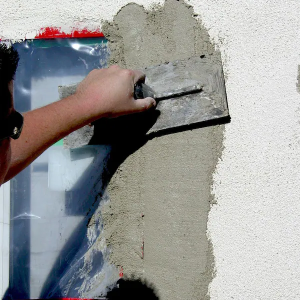Exterminators use pest control methods to address infestations of bugs, rodents, and wildlife. They also offer advice on preventing future infestations, such as by improving sanitation and sealing entry points into the home or business.
An exterminator’s main goal is to destroy the pests. However, they rarely provide a service satisfaction guarantee and often use chemicals that are more toxic than necessary to mitigate the problem. Click Here to learn more.

A pest infestation can be a nightmare. Unwanted visitors like cockroaches, ants, rodents and bed bugs are scary to have in your home and even more dangerous for kids. Unusual smells, signs of droppings, bites and property damage are all strong indicators that it’s time to call an exterminator.
When you look up exterminator services, you’ll see many options available. Two names you’ll most likely come across are “pest control professionals” and “exterminators.” But what’s the difference between these two options? And which one should you choose?
An exterminator is someone who specializes in removing and controlling pests from homes, offices and other types of buildings. They can deal with both indoor and outdoor pests. They may use a variety of methods, including chemical pesticides, baits and traps, and integrated pest management techniques.
Exterminators are trained to handle a wide range of pests, including insects such as cockroaches and termites, rodents such as mice and rats, birds and weeds. They can also deal with invasive plant species that have invaded a home or business. In addition to eliminating the current infestation, an exterminator will help prevent future problems by performing inspections, recommending sanitation practices and offering advice on habitat modification.
Professional exterminators are licensed and insured and follow all state and federal regulations regarding the use of pesticides. They can also offer a money back guarantee if they are unable to solve the problem. This gives you peace of mind knowing that your pests will be eliminated quickly and safely by a qualified and professional exterminator.
In addition to using state-of-the-art products and techniques, a pest control professional will focus on long term prevention rather than simply getting rid of the pests that are currently in your home. This will prevent them from returning in the future. They can also help you protect your family and pets by using less toxic pesticides when necessary. They are more than happy to discuss their treatment plan with you in as much detail as you’d like, so you can be fully informed about the process.
Safety
An exterminator’s job is to eliminate pest infestations and protect customers’ homes and businesses. They’re required to adhere to strict safety protocols while working with pest control products. In addition, they regularly attend workshops and seminars to improve their skills. This ensures that they’re up-to-date on the latest advancements in the pest control industry and can provide customers with safe, effective services.
One of the most important traits an exterminator must have is attention to detail. They are required to thoroughly inspect a customer’s home or business and identify any areas where pests may be hiding. This allows them to target the source of the problem and prevent future infestations.
In addition, an exterminator must be willing to work with the customer to develop a long-term plan for pest prevention. This may include advising the client on how to clean their property, how to store food properly, and how to keep garbage and pet waste away from their home or business.
Another thing that an exterminator must do is understand the impact of pests on their customer’s life. Not only are some pests a nuisance, but they can also cause health problems. Mosquitoes, for example, can spread dangerous diseases like encephalitis, dengue fever, Zika virus, and West Nile disease. Fleas can be harmful to pets and humans alike, while ticks can spread Lyme disease, Rocky Mountain spotted fever, and more.
While some people use over-the-counter pesticides to control pests, an exterminator is a professional who knows how to effectively utilize these products while protecting the health and well-being of their customers. They can offer a variety of pest control solutions, including mechanical devices such as ultrasonic sound waves that deter some pests or pheromone traps that disrupt the breeding cycle of others.
In addition, an exterminator should be prepared to take the time to listen to their customers. This is especially true in residential settings where the exterminator may need to navigate tight spaces, crawl spaces, and attics. They should also be able to communicate clearly with the customer, explaining their inspection findings and treatment plans in as much or as little detail as the customer wants.
Customized Solutions
Unlike off-the-shelf solutions, customized products meet a company’s unique needs and provide an optimal user experience. This translates into improved productivity, streamlined workflows, and better business results. Customized solutions also help businesses achieve their growth goals by aligning with their corporate vision and brand identity. Moreover, they can be more cost-effective than off-the-shelf products, as companies only pay for the features that they need.
Moreover, custom solutions are designed with security in mind. This means that they are less vulnerable to cyber attacks than pre-packaged software. This is because cybercriminals will not be able to access the source code of a customized solution. On the other hand, off-the-shelf software can be compromised by hackers since it is readily available on the internet.
The development process for a customized solution is complex, but it’s important to find the right team to build your product. To begin, make sure to clearly define your business requirements and the scope of your project. You should also consider the budget and timelines for the project. It’s also a good idea to do some research on the potential custom solution providers before selecting one. Ask other entrepreneurs in your industry for recommendations, read online reviews, and compare pricing.
Once you’ve chosen a custom solution provider, they can start developing your product. In some cases, they may even create a prototype to test the feasibility of the final solution. They can also help you develop a marketing strategy to promote your product.
When your custom solution is complete, it will be ready for use in your business. Once it’s in place, you can use it to streamline your processes and automate repetitive tasks. This will free up your employees’ time to focus on strategic and revenue-generating activities.
Customized solutions have a significant impact on contemporary businesses by transforming their operational capabilities and helping them succeed in the marketplace. These solutions offer a wide range of benefits, including scalability and flexibility, which allow businesses to adapt to market demands and seize opportunities promptly. Furthermore, they enable them to deliver a personalized customer experience that addresses customers’ pain points and preferences.
Peace of Mind
Pest infestations are not just annoying, they can also be dangerous. In addition to raising the creep factor and contaminating our food, rodents and other creatures can carry diseases and leave behind biohazardous waste. Hiring a professional exterminator gives you peace of mind that the problem will be taken care of and will not recur.
Before you hire any exterminator, make sure that they are licensed and insured as required by your state and country. You should also ask them about their previous experience and the methods they use to eliminate pests.
A good exterminator will always take the time to provide you with a detailed inspection and discuss a variety of treatment options. If they rely on chemicals, they should be able to explain the chemicals they use and their potential side effects. They should also be able to offer non-chemical alternatives when possible.
Another important thing to look for is an exterminator that uses safe, environmentally friendly products. This will help to reduce the impact on the environment and your family’s health. The last thing you want is to have your house full of poisons that will not only be harmful to your home, but also to those inside it.
It’s also a good idea to support local companies. This will give you more confidence that they are knowledgeable about your specific area’s pest problems and will be able to respond quickly to your needs.
Choosing the right exterminator can be an overwhelming task, but taking the time to scope out a few candidates will save you money and hassle in the long run. A qualified, reputable, experienced exterminator will provide you with the results that you need and will keep your family safe from pesky critters for years to come. So, don’t hesitate – call Colwell Termite & Pest Control today to get started! We will be happy to answer all of your questions and provide you with the best solution for your infestation. We will continue working with professionalism until your pest problem is completely resolved. Contact us today to request your free quote!








